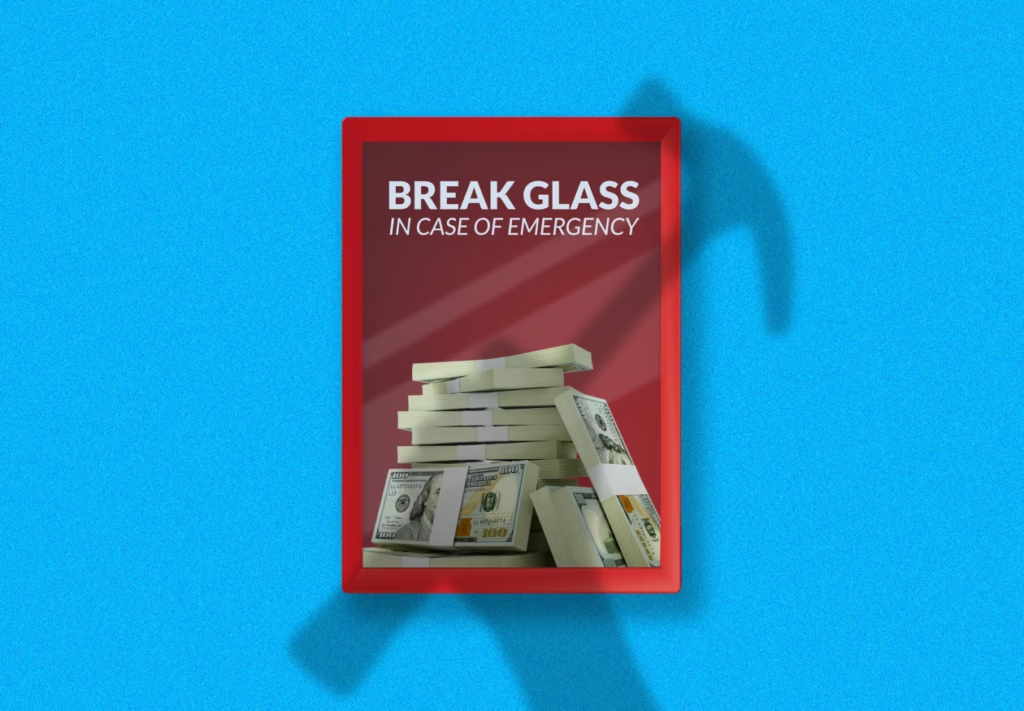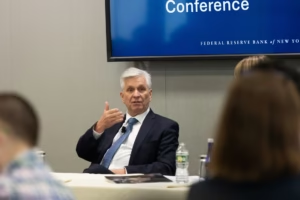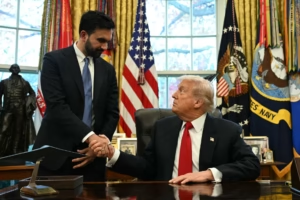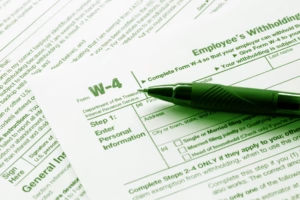According to one survey, emergency savings are now a “very important” or “extremely important” emphasis for 79% of companies’ financial well-being initiatives.
Noreen King stated that one of her objectives as an employer is “to make sure everyone’s OK”—including in the event that her employees experience an emergency.
Over the previous 25 years, her medical device company, Evolve Manufacturing, provided workers with ad hoc financial support, but it did not provide this kind of assistance to all of its employees. The CEO saw SecureSave, a fintech platform that enables businesses to create and fund employee-owned emergency savings accounts, as a more comprehensive approach to assisting staff in being ready for unforeseen circumstances.
According to her, over 75% of workers have chosen to participate in this savings benefit since Evolve launched it in October 2021. In addition to receiving a $25 contribution from Evolve each paycheck, enrollees have the option to have a dollar amount deducted automatically from their after-tax income.
King said to MarketWatch, “It really cost me very, very little, but it’s a great benefit,”
One Evolve employee, who wished to remain anonymous, claimed that instead of having to borrow money from a family member when her mother was ill in 2024, she was able to use her workplace emergency savings account to pay for a plane ticket home. She has taken out a total of $8,000. Another employee said that he replaced a tire that blew out on his way to work using $200 from his account.
A growing number of employers are offering emergency-savings accounts, or ESAs, as a dedicated benefit in addition to well-known workplace savings programs like 401(k)s and health savings accounts, as Americans’ top financial priority in the face of persistently high prices and a weakening labor market is to increase productivity by improving workers’ financial well-being.
In the meantime, analysts told MarketWatch that the Secure 2.0 Act, a law passed during the Joe Biden administration, might lead to an even greater spread of small savings accounts in the coming years. This bill permitted businesses to automatically enroll employees in so-called in-plan ESAs (those connected to pre-existing retirement plans) beginning in 2024, up to a $2,500 maximum amount. It prioritized emergency savings in policy.
As stated by Matt Bahl, vice president of workplace at the nonprofit Financial Health Network, “you’ve got income insufficiency challenges and rising costs – particularly healthcare, transportation, housing, the things you just need to live – and you put all of these things together, I think it’s why emergency-savings accounts are having a moment,” BourseWatch reported.
According to a 2024 Employee Benefit Research Institute poll, 37% of employers now offer emergency savings in some form. However, the most popular type is still a 401(k) loan, which financial experts advise should only be used as a last resort because it jeopardizes future retirement assets.
A relatively new benefit type that is receiving a lot of attention is dedicated ESAs: According to 79% of companies surveyed by the EBRI, emergency savings are now a “very important” or “extremely important” emphasis of their financial-wellbeing initiatives.
Fidelity told MarketWatch that it “has seen demand for emergency-savings benefits from employers nearly double each year over the past two years – a clear sign of momentum.” Fidelity began offering a “out-of-plan” ESA in 2019 dubbed Goal Booster. ESAs that are not connected to a retirement plan are known as out-of-plan ESAs.
MarketWatch said that Vanguard, which introduced its Cash Plus Account as an emergency savings alternative for businesses outside of their plans in 2024, has “seen strong adoption and growth.”
Enrollment in SecureSave has increased by almost 20% in the past 12 months. Sunny Day Fund, another unplanned ESA platform, said MarketWatch that this year saw a doubling of its enrolled companies.
The operation of emergency savings accounts in the workplace
According to a 2025 NerdWallet survey, only 25% of Americans automate emergency savings from their paychecks, despite financial-wellness experts recommending this as the norm for retirement. Instead, when people have excess cash, they usually save it at random. As a result, according to a June Empower study, 32% of respondents claim to have no emergency funds, while the median amount saved for emergencies is $500.
For many, high-interest credit card debt is the next destination. According to a May Bankrate study, one in four respondents indicated they would use a credit card to finance an unforeseen need and pay it off over time.
Employers began experimenting with various emergency-savings perks approximately six years ago in an effort to combat the problem.
Timothy Flacke, cofounder and CEO of Commonwealth, a nonprofit organization dedicated to enhancing financial stability for low- and moderate-income workers, stated that: “When you have access to a [account] connected to your paycheck that’s essentially vetted by your employer, and a continued message that this is something you can do, it really can help people to get closer to” their savings goals.
Employers can choose from a number of options: In addition to retirement programs, they can collaborate with platforms like Sunny Day Fund and SecureSave to allow employees to contribute or match a portion of their paychecks into conventional FDIC-insured savings accounts at partner banks. This is comparable to a split direct deposit. Employers pay a cost for each of these services, which is determined by the size of their staff. For instance, SecureSave charges $999 per month for large corporations and $99 per month for small firms.
Through their current benefit providers, companies can also add out-of-plan ESAs. For example, Fidelity, Vanguard, and T. Rowe Price provide workplace clients with a free out-of-plan emergency savings option.
Two new alternatives through employer retirement plans were introduced last year as a result of modifications made under the Secure 2.0 Act. First, they made it possible for employers to automatically enroll low-paid workers (up to $151,164 in 2025) in special in-plan emergency-savings accounts and make contributions of up to 3% of their salaries, up to a maximum balance of $2,500.
According to a research from the Bipartisan Policy Center, the automatic-enrollment option in retirement plans, which is not allowed in out-of-plan accounts, “could supercharge [the ESAs’] effect on savers’ overall financial security.”
Second, Secure 2.0 offered employers the choice to permit emergency withdrawals of up to $1,000 from retirement accounts without incurring penalties, with no more withdrawals permitted for the following three years unless the distribution was reimbursed.
According to Devin Miller, co-founder and CEO of SecureSave, the company incorporates behavioral-finance psychology into the product design “to make sure people aren’t endlessly raiding the accounts,” even if employees with out-of-plan accounts have complete access to their money at any time, he told MarketWatch.
For example, these accounts are not eligible for debit cards from the banks. Additionally, SecureSave asks users to identify the necessity for which they require the funds, but it doesn’t define what an emergency is or restrict how the money might be utilized. Additionally, the buttons are labeled “Get Emergency Money” rather than “Withdraw” or “Transfer.”
According to Miller, these characteristics “create a little bit of a speed bump,” The phrase “if you just call this a generic’savings account,’ people start to disassociate it from emergency savings” and subsequently use it for everyday expenses.
Up until now, the top five reasons given by SecureSave members for requiring emergency cash were travel (4%), home (6%), healthcare (5%), inflation (16%), and car/transportation (7%).
How emergency savings turned into a problem at work
With the launch of the Emergency Savings Initiative, a $50 million program with Commonwealth, the Financial Health Network, and Duke University’s Common Cents Lab to create employer-based savings options for workers with low to moderate incomes, the endeavor to establish emergency savings as a workplace benefit category began in earnest in 2019.
In the same year, Sid Pailla, the founder of Sunny Day Fund, also established his platform. Pailla told MarketWatch, “The default [in the U.S.] is getting a paycheck and saving for retirement – that’s it.” “You won’t automatically start saving money for every eventuality that may arise in your life before you retire. You’re expected to work that out for yourself.
Soon after, Suze Orman co-founded SecureSave, which was established in 2020 as the financial precarity of the typical American worker was shown by high unemployment rates during the pandemic.
“It was a watershed moment; building emergency savings into the fabric of an organization was no longer a question of if, but how,” according to a research by BlackRock.
Subsequent studies revealed that workers who had less financial stress were more productive and safer, supporting the business justification for workplace emergency savings.
Is a revolution in workplace savings imminent in America?
Due to increased economic volatility this year, some personal finance experts advise accumulating emergency reserves equivalent to six to twelve months’ worth of spending. Additionally, surveys indicate that Americans are quite interested in workplace savings plans, with saving being their top financial priority.
In 2024, 37% of employers reported to EBRI that they already provided an emergency savings fund, and 40% more stated that they intended to do so within the next year or two.





